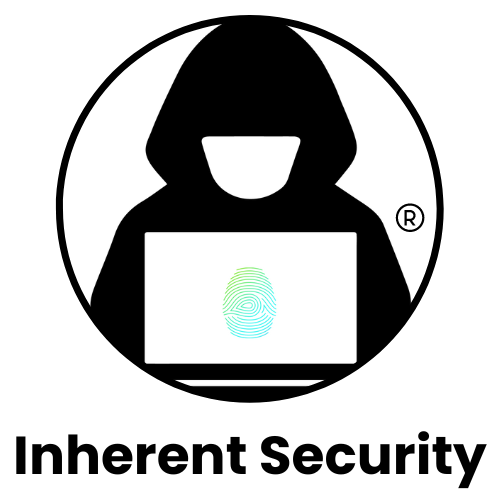The Healthcare Cybersecurity War: Trends, Technologies, and Tactics
The healthcare sector, traditionally focused on patient care and medical advancements, is now grappling with a new and formidable adversary: cyber threats. As digital transformation sweeps through healthcare, the industry's vulnerability to cyberattacks has become increasingly apparent. Recent data breaches affecting millions of patients' records have shed light on the urgent need for cybersecurity measures. This article delves into the current state of healthcare IT security, examining the latest trends, emerging technologies, regulatory challenges, and the key players striving to protect sensitive health information.
Rising Data Breaches and Cyber Threats
In 2024, the healthcare sector continues to be a prime target for cybercriminals. High-profile data breaches have become alarmingly common. For instance, Panorama Eyecare recently reported a breach that exposed the data of 377,911 individuals, while WebTPA Employer Services faced a similar fate, affecting 2.4 million people (HealthITSecurity). The FBI and HHS have issued warnings about increasing social engineering attacks, emphasizing the need for heightened vigilance and advanced security measures (HealthITSecurity).
Emerging Trends and Technologies:
1. Zero Trust Framework: The Zero Trust architecture, which advocates for continuous verification of all users and devices, is gaining traction in healthcare. This framework aims to limit the impact of breaches and automate response strategies, significantly reducing the risk of internal threats (ChartLogic).
IEEE Zero Trust Task Force committee is looking for interested parties: https://www.linkedin.com/posts/jimstclair_zerotrust-healthcare-cybersecurity-activity-7217207468769124352-LMLM?utm_source=share&utm_medium=member_desktop
2. Blockchain Technology: Blockchain's decentralized and immutable ledger system is making waves in healthcare cybersecurity. Known for securing financial transactions, this technology is now being leveraged to protect patient records, ensuring data integrity and privacy while reducing the risks of breaches and fraud. Blockchain also facilitates secure data sharing and enhances the accuracy of medical records (ChartLogic).
3. Biometric Authentication: Biometric authentication is emerging as a more secure alternative to traditional security measures. By utilizing unique biological characteristics, such as fingerprints and facial recognition, healthcare organizations can prevent unauthorized access to sensitive data. This method not only enhances security but also improves user convenience (ChartLogic).
4. IoT Device Security: The proliferation of IoT devices in healthcare has introduced significant security challenges. Many devices operate on outdated software, making them susceptible to cyberattacks. To address these vulnerabilities, healthcare organizations are implementing continuous monitoring and regular updates. The FDA has also put in cybersecurity requirements for medical devices. IoT device security is critical, as demonstrated by the vulnerabilities found in over 50% of connected devices in hospitals (ChartLogic) (Healthcare IT News).
5. Cloud Security: As healthcare organizations increasingly migrate to the cloud, they face new security challenges. Ensuring compliance with regulations and implementing stringent cloud controls are essential for protecting patient data off-premise. Despite these challenges, cloud adoption is expected to reach 90% by 2025, driven by the scalability and efficiency benefits it offers (ChartLogic).
Regulatory Compliance and Data Protection:
Evolving Data Privacy Regulations: Healthcare organizations must navigate a complex landscape of evolving data privacy regulations. Compliance with HIPAA, the FTC Act, and other regulatory requirements is crucial to avoid penalties and maintain patient trust. Comprehensive data protection strategies are essential for meeting these overlapping regulations and safeguarding sensitive health information (BDO).
Vendor Risk Management: The reliance on third-party vendors poses additional cybersecurity risks for healthcare organizations. Managing these risks is critical, especially as third-party breaches rank a top concern. Proactive vendor risk management strategies are necessary to protect patient data and ensure compliance with regulatory standards (HealthITSecurity) (BDO).
Key Players and Initiatives:
Healthcare and Public Health (HPH): HHS and HPH had developed Cybersecurity performance goals as benchmarks designed to help organizations measure and enhance their cybersecurity effectiveness. These goals typically focus on areas such as risk management, incident response, system and network security, and regulatory compliance. They aim to establish clear, achievable targets for organizations to ensure the confidentiality, integrity, and availability of their data and systems. (HPHCyber).
Healthcare and Public Health Sector Coordinating Council (HSCC): HSCC continues to play a pivotal role in providing cybersecurity guidance and best practices for the healthcare sector. Their efforts are crucial in helping organizations navigate the complex cybersecurity landscape.
Federal Bureau of Investigation (FBI) and Department of Health and Human Services (HHS): The FBI and HHS regularly issue cybersecurity advisories and collaborate on initiatives to combat cyber threats targeting healthcare. Their joint efforts are vital in disseminating information and best practices to healthcare organizations (HealthITSecurity).
Conclusion
The healthcare industry's digital transformation brings both opportunities and challenges. As cyber threats continue to evolve, healthcare organizations must adopt advanced technologies, cybersecurity frameworks, and proactive risk management strategies to protect sensitive patient data. The path forward requires a collaborative effort from regulatory bodies, healthcare providers, and cybersecurity experts to ensure a secure and resilient healthcare system. As the sector adapts to these challenges, staying informed and vigilant will be key to safeguarding the future of healthcare IT security.
Check out my featured section to:
->Download our HIPAA Guide for compliance insights
->Explore our HIPAA GPT tool for curated advice
->Talk to an Expert for customized support
